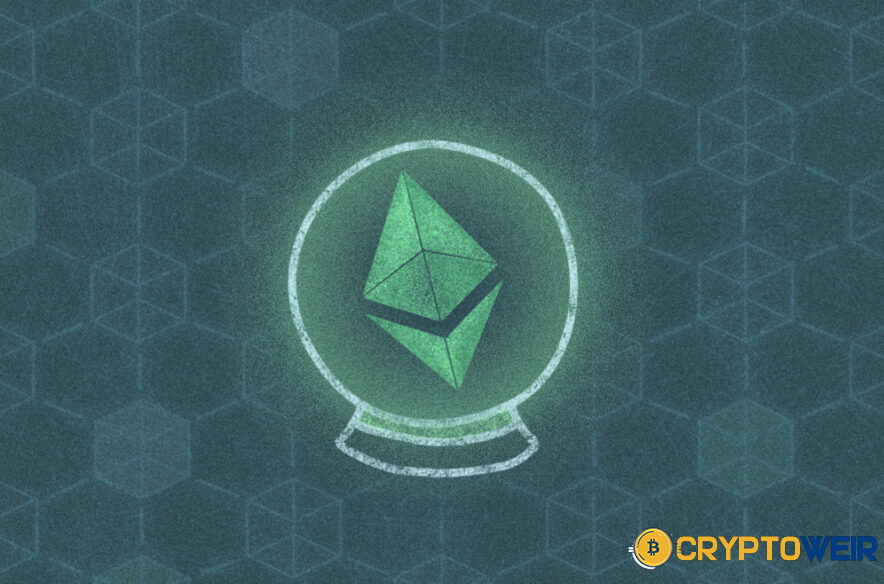Ethereum Fusaka Upgrade What to Expect Next Week in 2025
Ethereum Fusaka Upgrade introduces PeerDAS technology to revolutionize Layer 2 scaling, reduce fees, and boost network efficiency.

Fusaka upgrade represents a pivotal moment in Ethereum’s evolution, promising to address critical scalability challenges while maintaining the network’s commitment to decentralization and security. This isn’t just another routine update—it’s a fundamental reimagining of how Ethereum handles data, potentially unlocking unprecedented transaction capacity for both Layer 1 and Layer 2 solutions.
For anyone invested in or curious about Ethereum’s future, understanding the Fusaka upgrade is essential. This comprehensive upgrade introduces groundbreaking technologies like PeerDAS (Peer Data Availability Sampling) and implements crucial infrastructure improvements that will reshape the entire Ethereum ecosystem. Whether you’re a developer building decentralized applications, a validator securing the network, or simply an ETH holder wondering what this means for your investment, the Fusaka upgrade will impact you directly.
The timing couldn’t be more critical. Fusaka upgrade Ethereum has effectively reached its current blob capacity limit, creating bottlenecks that affect transaction costs and network efficiency. The Fusaka upgrade arrives as the solution to these pressing challenges, Ethereum Fusaka Upgrade: ushering Ethereum into what many are calling its “turbo mode” phase of development.
More Than Just a Name: Ethereum Fusaka Upgrade
The term “Fusaka” combines two distinct elements of Ethereum’s dual-layer architecture. The name merges “Osaka,” representing the execution layer upgrade, with “Fulu,” named after a star and representing the consensus layer improvements. This naming convention follows Ethereum’s tradition of honoring cities and celestial objects while reflecting the comprehensive nature of the upgrade.
The highly anticipated software update seeks to make Ethereum significantly more scalable by optimizing how the network collects and verifies data from layer-2 chains, building upon the foundation established by previous upgrades like Dencun and Pectra. What makes Fusaka particularly significant is its focus on solving the data availability problem—a fundamental challenge that has limited blockchain scalability for years.
The upgrade package contains twelve Ethereum Improvement Proposals (EIPs), each targeting specific aspects of network performance and functionality. These aren’t minor tweaks but substantial architectural changes designed to prepare Ethereum for mainstream adoption. The Fusaka upgrade represents months of rigorous testing, community discussion, and developer coordination, ensuring that when it goes live, the network can handle exponentially more data without compromising on security or decentralization.
This upgrade follows a carefully orchestrated rollout strategy. The update cleared its third and final testnet dress rehearsal without a hitch, demonstrating the thoroughness of Ethereum’s development process. The successful testnet implementations across multiple networks gave developers confidence to finalize the mainnet activation date, marking a significant milestone in Ethereum’s roadmap toward becoming a truly global settlement layer.
PeerDAS: The Revolutionary Technology Behind the Upgrade
At the heart of the Fusaka upgrade lies PeerDAS, or Peer Data Availability Sampling—a technology that Ethereum co-founder Vitalik Buterin described as “the key to L2 scaling, and eventually L1 scaling”. This innovative approach fundamentally transforms how Ethereum nodes handle and verify data, representing one of the most significant architectural changes since the network transitioned to proof-of-stake.
Traditional blockchain architecture requires every node to download and store complete datasets, creating an unavoidable bottleneck as network usage grows. This “full replication” model meant that increasing data throughput would inevitably lead to higher hardware requirements, potentially excluding smaller validators and threatening Ethereum’s cherished decentralization. PeerDAS elegantly solves this dilemma through a concept similar to torrenting for blockchains.
The technology works by dividing extended blob data into 128 pieces called columns, with each regular node on the network participating in at least 8 randomly chosen column subnets. Rather than downloading everything, nodes verify data availability by checking small random subsets—a statistical sampling approach that ensures data integrity without overwhelming individual participants. Think of it as a distributed verification system where the whole can be reconstructed from parts, but no single node needs to carry the entire burden.
What makes PeerDAS particularly clever is its use of erasure coding, the same technology that prevents scratched CDs from becoming unreadable. The data is encoded in a way that doubles its size before being split into 128 parts, creating redundancy that allows the complete blob to be reconstructed from just 50% of the slices. This mathematical elegance means the network gains robustness while dramatically reducing individual node requirements.
The practical implications are staggering. This allows for a new theoretical scaling limit of 8x the current “everyone downloads everything” schema, meaning Ethereum can handle eight times more data without forcing nodes to upgrade their hardware. For Layer 2 rollups that depend on Ethereum for data availability, this translates directly into lower costs and higher throughput—benefits that cascade down to end users in the form of cheaper transactions.
How Fusaka Transforms Layer 2 Scaling and Blob Capacity
Layer 2 solutions have become the primary scaling strategy for Ethereum, processing transactions off the main chain before posting compressed data back to Layer 1 for security and verification. However, this approach has faced a critical constraint: blob capacity. Blobs, introduced in the March 2024 Dencun upgrade, are specialized data structures designed to make Layer 2 submissions more cost-effective. Yet as adoption grew, the network quickly approached its limits.
Wednesday marked the first time Ethereum reached its six blobs per block target, driven primarily by activity on Coinbase’s Base Layer 2 and Worldcoin. When blob capacity maxes out, Layer 2 fees increase and transaction processing slows—exactly the opposite of what Ethereum’s scaling roadmap aims to achieve. The Fusaka upgrade directly addresses this bottleneck through multiple mechanisms.
First, the upgrade doubles the blob capacity immediately, moving from the current target of six blobs per block to higher limits. But that’s just the beginning. Post-Fusaka, Ethereum will implement a phased approach to increase blob capacity gradually, carefully monitoring network performance at each step. This conservative strategy protects network stability while enabling continuous improvement based on real-world data.
The impact on Layer 2 ecosystems will be transformative. Networks like Arbitrum, Optimism, and Base currently pay two types of fees when posting data to Ethereum: the blob fee and the execution gas needed to verify those blobs. The Fusaka upgrade introduces mechanisms to balance these costs more effectively, preventing situations where blob fees drop to negligible levels and lose their function as price signals.
For developers building on Layer 2 platforms, these changes open new possibilities. Applications that were previously too expensive or data-intensive to deploy become viable. Decentralized finance protocols can handle more complex operations, gaming applications can manage more on-chain state, and social platforms can store more user-generated content—all while maintaining Ethereum’s security guarantees.
Technical Improvements: Gas Limits, Cryptography, and Network Efficiency
Beyond PeerDAS and blob scaling, the Fusaka upgrade introduces several other technical enhancements that collectively strengthen Ethereum’s infrastructure. One significant change involves raising gas limits, which determine how much computation can fit into a single block. The upgrade increases block limits from 45 million to potentially 150 million gas, representing more than a threefold expansion in computational capacity.
This increase doesn’t happen recklessly. The upgrade includes mechanisms to prevent any single transaction from dominating block space, ensuring that increased capacity benefits the entire network rather than enabling potential abuse. Ethereum Improvement Proposal 7825 caps individual transaction gas limits, creating a more balanced and predictable transaction environment even as overall throughput grows.
Cryptographic improvements also feature prominently in Fusaka. The upgrade introduces new precompiles that support modern authentication standards used by passkeys on iOS and Android devices. This advancement paves the way for simpler wallet experiences, potentially eliminating the need for users to manage complex seed phrases while maintaining robust security. For enterprises building on Ethereum, these improvements make it easier to create user-friendly applications that don’t sacrifice security for convenience.
Network efficiency receives attention through multiple smaller optimizations that compound into meaningful improvements. Data verification becomes more streamlined, consensus mechanisms operate more smoothly, and validators experience reduced computational burden. These changes might not generate headlines like PeerDAS, but they’re essential for maintaining network health as usage scales.
The upgrade also incorporates lessons learned from previous implementations. Ethereum’s development philosophy emphasizes iterative improvement, and Fusaka reflects years of real-world data about how the network performs under various conditions. This evidence-based approach to protocol development helps ensure that upgrades deliver practical benefits rather than just theoretical improvements.
What Fusaka Means for Users, Validators, and Developers
The Fusaka upgrade’s impact extends across Ethereum’s entire ecosystem, touching everyone from casual users to professional node operators. For everyday users, the most immediate benefit will likely be reduced transaction costs on Layer 2 platforms. As these networks gain access to more blob capacity and benefit from PeerDAS efficiency, they can process more transactions at lower cost, passing savings directly to users.
Transaction speed improvements should also become noticeable. With enhanced data throughput and more efficient verification mechanisms, confirmations should arrive faster across both Layer 1 and Layer 2 networks. While Ethereum won’t suddenly match the transaction speeds of more centralized blockchains, the gap will narrow considerably while maintaining Ethereum’s security and decentralization advantages.
For validators, Fusaka represents a mixed bag of challenges and opportunities. The reduced data requirements mean running a node becomes more manageable, potentially attracting new validators to strengthen network decentralization. However, some worry that increased complexity could favor well-resourced operators, creating subtle centralization pressures. Ethereum’s development community remains vigilant about these trade-offs, continuously monitoring validator distribution and participation rates.
Developers gain powerful new tools through Fusaka. The expanded gas limits enable more sophisticated smart contracts that were previously too expensive to deploy. Improved cryptography support simplifies user authentication, allowing developers to create more accessible decentralized applications. The enhanced Layer 2 infrastructure means applications can scale more effectively without compromising on Ethereum’s security guarantees.
Perhaps most importantly, Fusaka creates momentum. Successful implementation demonstrates that Ethereum can execute complex upgrades smoothly, building confidence in the network’s ability to continue evolving. This psychological factor shouldn’t be underestimated—it affects developer interest, institutional investment, and community morale, all of which contribute to Ethereum’s long-term success.
Ethereum’s Long-Term Roadmap and Future Upgrades
The Fusaka upgrade represents just one milestone in Ethereum’s ambitious multi-year development roadmap. While PeerDAS delivers immediate scaling benefits, it’s explicitly designed as a stepping stone toward even more advanced solutions. The ultimate goal is “Full Danksharding,” which will implement two-dimensional erasure coding across the entire matrix of blob data, creating even stronger redundancy properties and more efficient verification mechanisms.
Looking beyond Fusaka, Ethereum developers are already planning the next major upgrade, tentatively called “Glamsterdam” (combining “Gloas” and “Amsterdam”). Expected in late 2026, this mega-upgrade will bundle approximately 25 Ethereum Improvement Proposals and aims to reduce Ethereum’s block time by 50%. Faster block times mean quicker transaction finality—a crucial improvement for applications requiring near-instant confirmation.
The longer-term vision includes transitioning validators from reexecuting transactions to simply verifying zero-knowledge proofs, potentially enabling the Layer 1 network to handle 10,000 transactions per second. This transformation, expected to be completed within five years, would fundamentally change Ethereum’s architecture while maintaining its core values of security and decentralization.
Ethereum’s development roadmap also focuses on improving finality—the certainty that transactions won’t be reversed. Current finality times require multiple epochs, but future upgrades aim to achieve single-slot finality, where transactions become permanent within seconds. This improvement would make Ethereum more competitive for applications requiring instant settlement, such as payments and high-frequency trading.
Throughout this evolution, Ethereum maintains its commitment to client diversity and decentralized governance. Unlike blockchains controlled by single development teams, Ethereum relies on multiple independent client implementations and rough consensus among hundreds of core developers. This approach may slow decision-making but produces more resilient, battle-tested upgrades that reflect diverse perspectives and priorities.
Market Impact and Price Considerations
As with any major network upgrade, speculation abounds about Fusaka’s potential impact on ETH’s market price. Historical precedent provides some context—in the days following the network’s previous upgrade, Pectra, ETH did surge by nearly 29%, though that increase also coincided with favorable macroeconomic developments, making it difficult to isolate the upgrade’s specific contribution.
ETH price has gained 4% recently, reclaiming the $3,000 levels as investors await the Fusaka upgrade, suggesting positive market sentiment heading into the activation. Technical analysts have identified key support and resistance levels, with some projecting potential moves toward $3,400 if current support holds, though market conditions remain inherently unpredictable.
Beyond short-term price movements, Fusaka’s true market impact lies in its effect on Ethereum’s fundamental value proposition. By dramatically improving scalability and reducing Layer 2 costs, the upgrade makes Ethereum more competitive against newer blockchain platforms that have prioritized raw speed over decentralization. This competitiveness matters for attracting developers, retaining users, and maintaining Ethereum’s position as the dominant smart contract platform.
The upgrade’s economic mechanisms also deserve attention. Cheaper rollups are expected to stimulate activity across Layer 2 networks, potentially increasing the amount of ETH burned through transaction fees. Under Ethereum’s EIP-1559 fee model, increased network activity leads to more ETH being permanently removed from circulation, creating deflationary pressure that could support long-term price appreciation.
Institutional investors have shown renewed interest in Ethereum, with ETH exchange-traded funds recording significant inflows recently. Major financial institutions view successful technical upgrades as evidence of Ethereum’s maturity and long-term viability, potentially catalyzing additional institutional adoption. However, investors should remember that network upgrades guarantee technical improvements, not price increases—market dynamics depend on countless factors beyond protocol development.
Addressing Potential Risks and Challenges
While the Fusaka upgrade promises substantial benefits, acknowledging potential risks and challenges is essential for a complete picture. Perhaps the most significant concern involves centralization pressures. As PeerDAS increases data requirements and network complexity, smaller validators might struggle to keep pace, potentially concentrating validation power among well-resourced operators.
Ethereum’s development community takes these concerns seriously. The entire purpose of PeerDAS is to avoid centralization by preventing runaway hardware requirements, but implementation details matter enormously. Early testnet trials revealed potential issues, including network fragmentation and adversarial data unavailability, where malicious actors might attempt to disrupt verification processes. Addressing these challenges requires ongoing research into penalty mechanisms and bandwidth optimizations.
Another risk involves the phased rollout of increased blob capacity. While the conservative approach protects network stability, it also means that scaling benefits will materialize gradually rather than all at once. If Layer 2 adoption accelerates faster than blob capacity increases, temporary congestion could occur, potentially dampening enthusiasm for the upgrade’s benefits.
Technical complexity itself poses challenges. As Ethereum’s protocol grows more sophisticated, understanding and maintaining the network requires increasingly specialized knowledge. This complexity could create barriers for new developers and validators, potentially slowing ecosystem growth. Education and documentation efforts become crucial for ensuring that Ethereum’s improvements remain accessible to diverse participants.
Smart contract developers also face challenges adapting to new parameters. Changes to gas costs, particularly for operations like ModExp precompile, mean some existing contracts might become more expensive to execute. Developers need to audit their code, test thoroughly on testnets, and potentially refactor contracts to maintain optimal performance under the new protocol rules.
Despite these concerns, Ethereum’s track record suggests that the community can navigate these challenges effectively. The network has successfully implemented numerous complex upgrades, each building on lessons learned from previous experiences. Robust testing procedures, open communication channels, and strong developer incentives all contribute to mitigating risks and ensuring smooth upgrade execution.
Preparing for Fusaka: What You Need to Do
For most Ethereum users, preparing for the Fusaka upgrade requires minimal action. If you hold ETH on a major exchange or in a hardware wallet, your funds remain secure throughout the upgrade process. Reputable exchanges handle all necessary technical preparations behind the scenes, ensuring that user assets remain accessible before, during, and after the activation.
Developers building on Ethereum should take more proactive steps. Review your smart contracts for potential impacts from changed gas costs or new protocol features. Test thoroughly on testnets that have already implemented Fusaka to identify any unexpected behavior. Pay particular attention if your contracts heavily utilize operations whose costs might change, and consider refactoring if necessary to maintain efficiency.
Validators and node operators need to upgrade their client software before December 3. All major Ethereum clients—including Geth, Nethermind, Besu, Erigon for the execution layer, and Prysm, Lighthouse, Teku, Nimbus, Lodestar for the consensus layer—will release Fusaka-compatible versions. Running outdated software after the upgrade activates could result in your node following a deprecated chain, missing rewards, or becoming isolated from the network.
For those participating in Layer 2 ecosystems, monitoring announcements from your preferred platforms is advisable. Layer 2 networks will leverage Fusaka’s improvements to enhance their services, potentially adjusting fee structures or introducing new features. Understanding these changes helps you take full advantage of improved capabilities and cost savings.
The broader community should stay informed through official Ethereum channels. Following the Ethereum Foundation blog, major client teams, and prominent developers on social media provides timely information about upgrade progress, potential issues, and success metrics. While the upgrade has undergone extensive testing, monitoring initial post-activation performance helps identify any unforeseen issues quickly.
Conclusion
The Fusaka upgrade represents a watershed moment in Ethereum’s evolution, delivering transformative improvements to scalability, efficiency, and user experience. By introducing PeerDAS technology, dramatically expanding blob capacity, and implementing numerous technical enhancements, this upgrade positions Ethereum to handle exponentially greater transaction volumes while maintaining its core commitments to decentralization and security.
Alex Stokes, the Ethereum developer who led the final coordination meeting, captured the community sentiment when he said, “It’s a really big deal,”—and the evidence supports this assessment. From everyday users who will benefit from lower fees to developers gaining powerful new capabilities, from validators experiencing reduced operational burden to the entire ecosystem gaining competitive advantages, Fusaka’s impact will ripple across all aspects of Ethereum.
As December 3 approaches, the Ethereum community stands united in anticipation. Years of research, months of testing, and countless hours of development culminate in this single upgrade activation. While short-term price speculation captures headlines, Fusaka’s true significance lies in its long-term implications for Ethereum’s role in the global financial system.
The successful implementation of Fusaka won’t mark the end of Ethereum’s journey—it’s another crucial step along a carefully charted path toward becoming the world’s decentralized settlement layer. With “turbo mode” engaged, Ethereum enters a new phase of its evolution, better equipped than ever to fulfill its promise of being a neutral, secure, and truly global platform for decentralized applications.
The blockchain revolution continues, and with the Fusaka upgrade, Ethereum demonstrates once again why it remains at the forefront of this transformation.
FAQs
Q: What exactly is the Ethereum Fusaka upgrade, and why does it matter?
The Fusaka upgrade is a comprehensive network enhancement scheduled for December 3, 2025, that fundamentally improves how Ethereum handles data. It introduces PeerDAS (Peer Data Availability Sampling), which allows nodes to verify data without downloading everything, dramatically increasing the network’s capacity to process transactions from Layer 2 chains.
Q: How will PeerDAS technology change the way Ethereum works?
PeerDAS transforms Ethereum’s data management by splitting information into 128 smaller pieces called columns, allowing each node to download and verify just a fraction of the total data rather than everything. Using clever mathematical techniques like erasure coding, the complete dataset can be reconstructed from just 50% of the pieces, meaning the network achieves redundancy without forcing every participant to store everything.
Q: Will the Fusaka upgrade affect the price of ETH?
While previous Ethereum upgrades have coincided with price increases—the Pectra upgrade saw ETH surge nearly 29%—predicting market movements remains inherently speculative. The Fusaka upgrade improves Ethereum’s fundamental capabilities and competitiveness, which theoretically supports long-term value appreciation.
Q: Do I need to do anything to prepare for the Fusaka upgrade if I hold ETH?
For most ETH holders, no action is required. If you store your ETH on major exchanges like Coinbase, Binance, or Kraken, these platforms handle all technical preparations automatically. If you use hardware wallets or self-custody solutions, your funds remain secure throughout the upgrade—Ethereum upgrades don’t require manual intervention from token holders.
Q: What comes after Fusaka in Ethereum’s development roadmap?
Fusaka is one milestone in Ethereum’s multi-year evolution toward becoming a truly scalable global settlement layer. The next major upgrade, tentatively called “Glamsterdam,” is planned for late 2026 and will include approximately 25 Ethereum Improvement Proposals, with a key goal of reducing block time by 50% for faster transaction finality.











